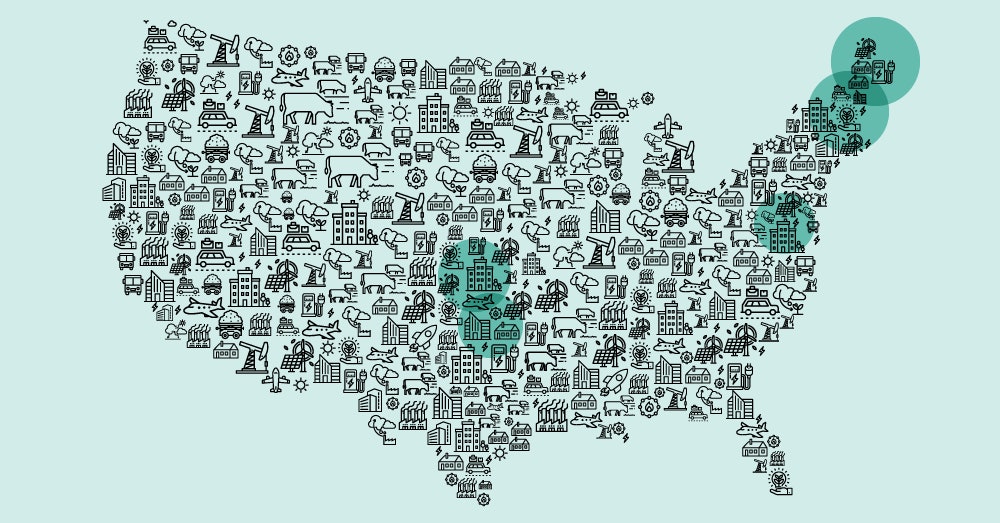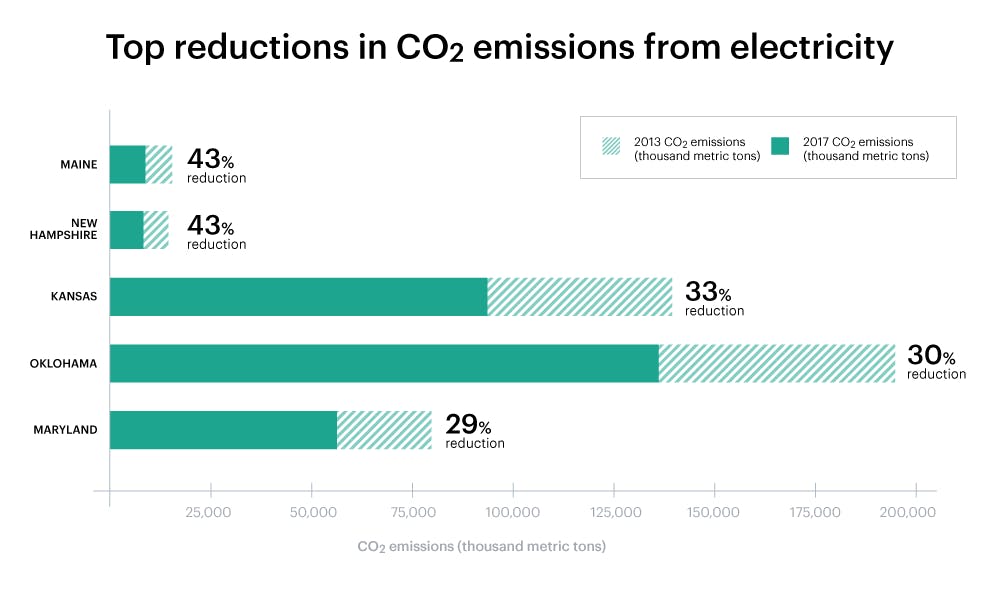Lessons in carbon-cutting from five U.S. states

2018 saw record-high global carbon emissions — CO2 emissions rose by 2.7 percent to a high of 37.1 billion tons, due largely to increases in coal and car use worldwide.
These worldwide trends are certainly worrisome, but in the five years leading up to 2018, many U.S. states painted a different picture entirely. Between 2013 and 2017, all but three states (Mississippi, New Jersey, and Rhode Island) saw declines in CO2 emissions. The steps many states took to achieve these declines can serve as valuable lessons on how to move forward.
What do these declines look like state-by-state?
The U.S. as a whole saw a decline from 2.2-million metric tons emitted in 2013 to 1.9-million emitted in 2017, a 15 percent drop in total. But many states saw much steeper declines. Maine, New Hampshire, Kansas, Oklahoma, and Maryland made up the top five states with the most drastic declines in carbon emissions from electricity.
Data source: Energy Information Agency

But what exactly caused these declines?
The reductions in greenhouse gas (GHG) emissions from electricity across each state were no accident. Many of the states have been working to implement renewable infrastructure in an effort to curb their emissions since far earlier than 2013.
Take Maine, for instance: the state’s GHG emissions have been on the decline since 2002. Maine established and wrote into law state-wide carbon reduction goals in 2003. By 2004, the state had developed a 55-step climate action plan which included steps like collecting funds from utilities and redistributing them to renewable energy producers, like wind farms and solar energy systems, and planting fast-growing trees in poorly-stocked forests to sequester carbon in the atmosphere.
In 2007, Maine joined the Regional Greenhouse Gas Initiative (RGGI), the first mandatory market-based program in the U.S. to cap GHG emissions. In so doing, Maine joined the likes of nine other states — Connecticut, Delaware, Maryland, Massachusetts, New Hampshire, New Jersey, New York, Rhode Island, and Vermont — in capping the amount of CO2 pollution from power plants. The initiative successfully led to reductions in pollution from the power sector across most member states: Maine alone has generated $257-million in energy savings as a result of joining RGGI, which has been invested back into energy efficiency programs.
New Hampshire, another member of RGGI and the state with the second-highest reduction in emissions between 2013 and 2017, also developed a climate action plan in 2009 that included steps like implementing renewable energy systems in all new buildings and importing clean power generated from hydro and wind sources. By 2015, the state had its GHG emissions down to what they were in 1990.
The EIA’s numbers go to show that through integrated efforts and a commitment to building renewable energy infrastructure, states hold tremendous power to reduce their CO2 emissions. While the reality of the global climate crisis may feel daunting, action at the state level has proven to work.
